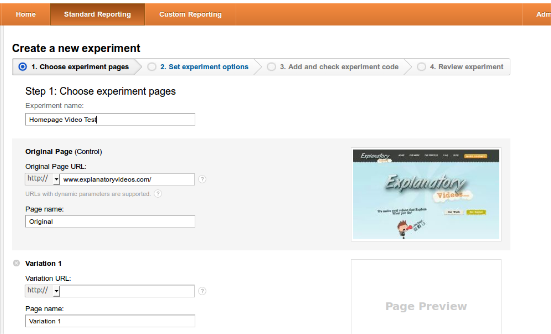Production companies often quote statistics that supposedly prove the effectiveness of video in increasing conversions, leads, page views and your happiness in general.
But really, it’s the numbers that your video actually generates that dictate whether it’s a success or not. So…
What is the best way to measure your video’s success?
First things first, you need to define what “success” is to you. Numbers can be used to prove almost anything, so you need to have a clear goal in mind that will help you zero in on the relevant data.
This step actually needs to be considered before the video is even made as the producers must ensure that the message and call to action harmonize with the over-arching goals of the client.
Once you have a goal clear in mind, you can set-up monitoring and track the relevant data correctly.
Let’s assume you want to increase the number of leads you receive.
The simplest way of measuring your video’s impact on this would be to monitor the number of leads you receive a few weeks or months before you embed the video in your site, and then comparing these with the number of leads received afterwards (Google Analytics is the industry leader for doing this).
This can help you get a basic idea of how your video is performing, but it isn’t the most accurate method. It doesn’t take into account the normal ups and down related to your busy and slow seasons. It also doesn’t take into account any other adjustments that may have been made to your site during the testing phase.
A good way to refine the data quality is using Google’s Web Content Experiments Tool. This free tool forms part if Google Analytics, and makes it easy to A/B split test page variants.
Basically, you to give Google different variants of a web page and then tell it what user actions you want it to measure. Google will randomly serve these variants to new visitors, track their actions and give you real-time results about the tests progress.
Once Google has collected enough data, it will tell you which page was the winner.
You can test up to 6 page variants at once, although I suggest you use just two variants to start with. This will give clearer results, especially if you don’t have huge amounts of visitors to your site.
How use Google Content Experiments to track video success?
- Come up with two versions of the web page you use to drive leads (likely your homepage) – one with your shiny, twinkly video and one without.
- Navigate to the Google’s Web Content Experiments Tool. You can find this by logging in to the correct Google Analytics account, choosing “Content” from the left pane menu on the “Standard Reporting” tab and then selecting “Experiments”.

Step 2
- Enter the address of the page you want to split test and click “Start Experimenting”.

Step 3
- The wizard now basically guides you through the process, it’s not difficult.

Step 4
- Wait for the results! Once you start the test, it will take a couple of weeks for Google to pick a winner between the page variants you have given it, but it will give you real-time data as the test progresses.
Once you have the results, you will have a clear idea of how adding video has contributed to your goals.
But don’t stop there! Keep using the Experiments tool to refine your web page, possibly changing your video thumbnail image or the text content that surrounds it. This is called the “champion-challenger” method – because you test a proven design (champion) against a possibly variant (challenger). Each time you collect the results, it helps you to see what is working for you and what is not.
Of course, this is not the only way to chart your videos success. Many hosting providers such as Wistia, Vimeo, Vidyard provide extremely detailed feedback on your video’s performance.
Using these analysis tools can help you to see how long people watch your video, what sections are engaging viewers the most and much much more.
All this helps you tweak and improve future video marketing campaigns.
In the meantime, having some simple but compelling statistics that prove those video producers aren’t full of hot air (not to mention the increased leads and conversions) is definitely a recipe for feeling good.
Kenny Simpson is a Creative Producer at ExplanatoryVideos.com
If you would like to have an explainer video produced or would like more information, click here to drop us a line and get a FREE CONSULTATION and QUOTE.




